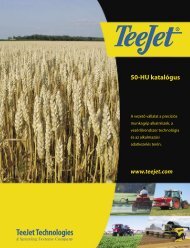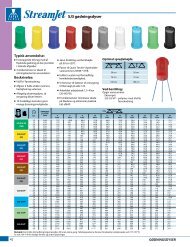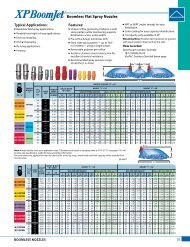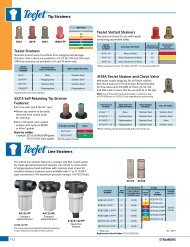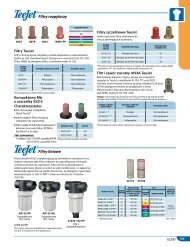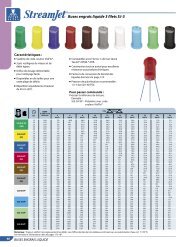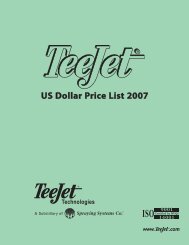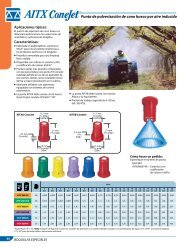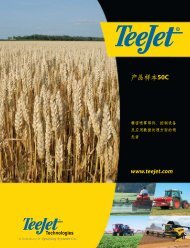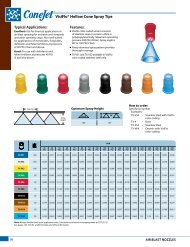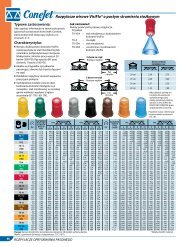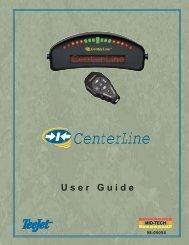You also want an ePaper? Increase the reach of your titles
YUMPU automatically turns print PDFs into web optimized ePapers that Google loves.
Droplet Size and Drift InformationA nozzle’s spray pattern is made up ofnumerous spray droplets of varying sizes.Droplet size refers to the diameter of anindividual spray droplet.Since most nozzles have a wide distributionof droplet sizes (otherwise known as dropletspectrum), it is useful to summarize thiswith statistical analysis. Most advanceddrop size measuring devices are auto mated,using computers and high-speed illuminationsources such as lasers to analyzethousands of droplets in a few seconds.Through statistics, this large volume of datacan be reduced to a single number that isrepresentative of the drop sizes contained inthe spray pattern and can then be classifiedinto droplet size classes. These classes (veryfine, fine, medium, coarse, very coarse,and extremely coarse) can then be used tocompare one nozzle to another. Care mustbe taken when comparing one nozzle’sdrop size to another, as the specific testingprocedure and instrument can bias thecomparison.Droplet sizes are usually measured inmicrons (micrometers). One micron equals0.001 mm. The micron is a useful unit ofmeasurement because it is small enoughthat whole numbers can be used in dropsize measurement.The majority of agricultural nozzles canbe classified as producing either fine,medium, coarse or very coarse droplets.A nozzle with a coarse or very coarse dropletis usually selected to minimize off-targetspray drift, while a nozzle with a fine dropletis required to obtain maximum surfacecoverage of the target plant.To show comparisons between nozzle types,spray angle, pressure and flow rate, refer tothe droplet size classes shown in the tableson pages 182–183.Another droplet size measurement thatis useful for determining a nozzle’s driftpotential is the percentage of driftable fines.Since the smaller droplets have a greatertendency to move off-target, it makes senseto determine what the percentage of smalldroplets is for a particular nozzle in order tominimize it when drift is a concern. Dropletsbelow 200 microns are considered potentialdrift contributors. The table below showsseveral nozzles and their percentage ofdriftable fines.Spraying Systems Co.® uses the mostadvanced measuring instrumentation (PDPAand Oxford lasers) to characterize sprays,obtaining droplet size and other importantinformation. For the latest accurateinformation about nozzles and their dropletsize, please contact your nearest <strong>TeeJet</strong>representative.Driftable Droplets*Nozzle Type(0.50 GPM Flow)XR <strong>TeeJet</strong>® 110°XR <strong>TeeJet</strong> 80°DG <strong>TeeJet</strong>® 110°DG <strong>TeeJet</strong> 80°TT – Turbo <strong>TeeJet</strong>®TF – Turbo FloodJet®AI <strong>TeeJet</strong>® 110°Approximate Percentof Spray Volume LessThan 200 Microns15 PSI 40 PSI14% 22%6% 12%N/A 11%N/A 7%





